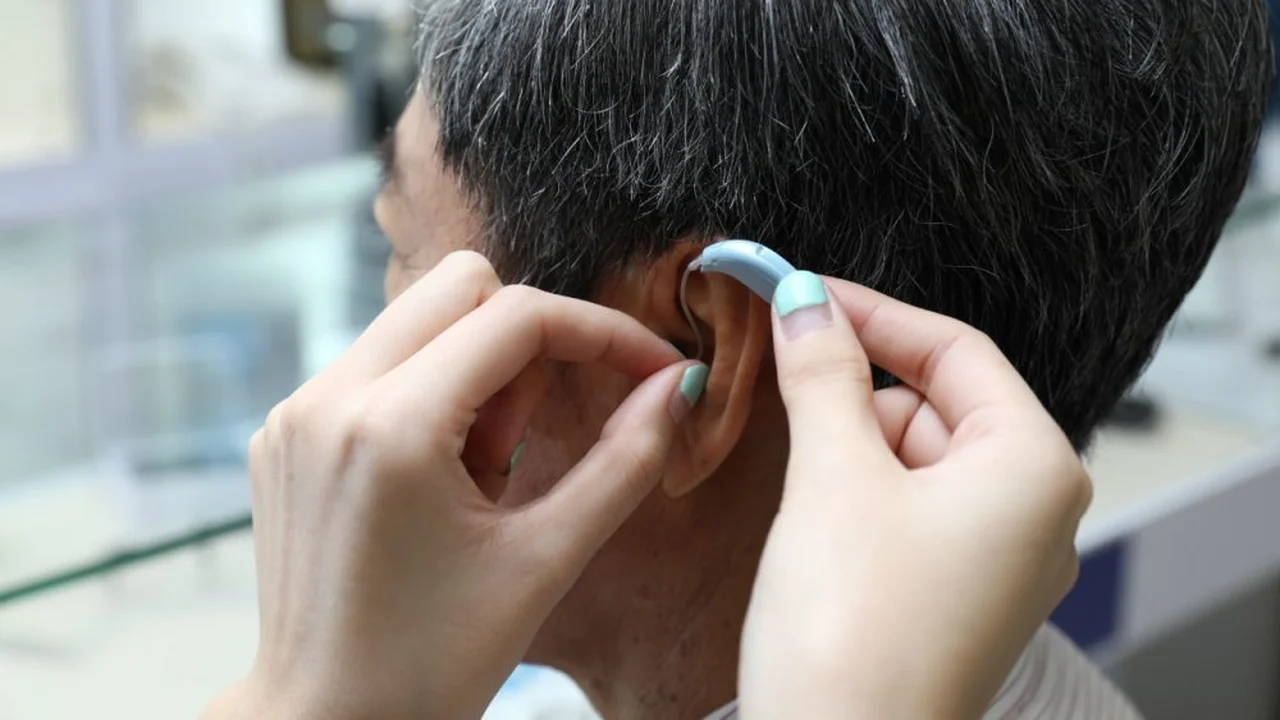Buying Hearing Aids Abroad Considerations
Explore the considerations when buying hearing aids abroad. Understand potential cost savings, warranty issues, and fitting challenges.

Buying Hearing Aids Abroad What You Need to Know Before You Go
Hey there! So, you're thinking about buying hearing aids abroad, huh? It's a pretty common thought, especially when you see those price tags back home. The idea of saving a significant chunk of change can be really appealing, and let's be honest, who doesn't love a good deal? But before you pack your bags and book that flight, there are a ton of things you absolutely need to consider. It's not just about the price; it's about your hearing health, the quality of care, and what happens if something goes wrong. Let's dive deep into everything you need to know to make an informed decision.
Why Consider Buying Hearing Aids Abroad Exploring Cost Savings and Accessibility
The primary driver for most people looking to purchase hearing aids internationally is, without a doubt, the cost. In many Western countries, particularly the US, hearing aids can be incredibly expensive, often ranging from $2,000 to $7,000 per device, sometimes even more. This high cost is often attributed to research and development, distribution channels, professional fitting fees, and insurance complexities. In contrast, countries in Southeast Asia, Eastern Europe, or even some parts of Latin America might offer the same or similar models at a fraction of the price. This can be due to lower labor costs, different regulatory environments, and less complex healthcare systems. For someone without comprehensive insurance coverage for hearing aids, these savings can be life-changing, making advanced hearing technology accessible when it otherwise wouldn't be.
Beyond just the sticker price, some people might also consider buying abroad due to accessibility issues. Perhaps they live in a remote area with limited access to audiologists, or they're looking for specific brands or technologies that aren't readily available in their home country. Medical tourism, in general, is a growing trend, and hearing aid purchases fall right into that category. The promise of a vacation combined with a significant medical saving can be a powerful motivator.
Potential Pitfalls and Risks Understanding Warranty Issues and Aftercare Challenges
Alright, let's get real about the downsides. While the cost savings are tempting, there are significant risks involved, and the biggest one often revolves around warranties and aftercare. Imagine this: you buy a fantastic pair of hearing aids in Thailand, save thousands, and you're thrilled. Six months later, one of them stops working. What do you do? Most manufacturers offer international warranties, but the process of claiming one can be a nightmare. You might have to ship the device back to the country of purchase, or to a designated service center, which could be in a third country. This means shipping costs, customs delays, and potentially being without your hearing aids for weeks or even months. Plus, some warranties might only be valid in the country of purchase.
Then there's the crucial aspect of aftercare. Hearing aids aren't a 'set it and forget it' kind of device. They require ongoing adjustments, cleanings, and fine-tuning to ensure optimal performance as your hearing changes or as you encounter different listening environments. If you buy abroad, who will provide this essential follow-up care when you're back home? Most local audiologists are understandably hesitant to service devices they didn't sell or fit, as they can't guarantee the initial programming or the device's history. This could leave you in a lurch, potentially paying out-of-pocket for services that would normally be included in a local purchase, or worse, having a device that isn't properly optimized for your unique hearing needs.
Another risk is the authenticity of the product. While many reputable clinics exist abroad, there's always a chance of encountering counterfeit or refurbished devices being sold as new. Without the proper knowledge or a trusted local contact, it can be hard to verify the legitimacy of what you're buying.
The Importance of Professional Fitting and Audiological Expertise Why Local Care Matters
This is perhaps the most critical point. A hearing aid is not like a pair of glasses you can just pick off a shelf. It's a sophisticated medical device that needs to be precisely programmed and fitted to your specific hearing loss profile, ear canal anatomy, and lifestyle. This process, known as a 'fitting,' is performed by a qualified audiologist and involves several steps:
- Comprehensive Hearing Evaluation: Before anything else, you need an up-to-date audiogram to accurately diagnose your hearing loss.
- Ear Impression: For custom-fit devices (like ITE, ITC, CIC), an impression of your ear canal is taken to ensure a perfect, comfortable fit.
- Programming and Real-Ear Measurement (REM): This is where the magic happens. The audiologist uses specialized software and equipment (REM) to measure how the hearing aid is amplifying sound *inside your ear canal*. This ensures the sound is delivered at the correct levels for your specific hearing loss, without over-amplification or under-amplification. This step is often skipped or done improperly in less reputable clinics, especially abroad, leading to poor sound quality and user dissatisfaction.
- Counseling and Adjustment: The audiologist will teach you how to use and care for your devices, and make initial adjustments based on your feedback.
- Follow-up Appointments: Multiple follow-up visits are usually required to fine-tune the settings as you adapt to the new sounds and environments.
When you buy abroad, you might miss out on some or all of these crucial steps. Even if you get a basic fitting, the lack of ongoing, personalized care from a consistent professional can severely impact the effectiveness and your satisfaction with the hearing aids. Your hearing is unique, and so should be the care you receive.
Navigating Regulations and Quality Standards Understanding Different Country Requirements
Different countries have different regulations regarding medical devices, including hearing aids. What's considered a standard of care or a required feature in one country might not be in another. For example, the FDA in the US has strict guidelines for medical devices, ensuring a certain level of safety and efficacy. Other countries might have less stringent regulations, which could mean the devices available there might not meet the same quality or safety standards you're used to. It's essential to research the regulatory environment of the country you're considering. Are the audiologists licensed and certified to the same standards as in your home country? Are the clinics reputable and do they adhere to international best practices?
Furthermore, the availability of specific brands and models can vary. While major global brands like Phonak, Oticon, Signia, ReSound, and Starkey are often available worldwide, their distribution networks and authorized dealers might differ. You might find older models being sold as new, or specific features might be disabled or unavailable in certain regions due to local regulations or market strategies.
Specific Product Recommendations and Comparisons What to Look For
If you're still set on exploring options abroad, or just want to be informed, let's talk about some popular hearing aid brands and models, and what to look for. Keep in mind that prices listed here are general estimates for the US market and would likely be significantly lower abroad, but the features and technology remain consistent.
Phonak Audeo Lumity L90 RIC The All-Rounder
- Description: The Lumity L90 is Phonak's premium Receiver-In-Canal (RIC) offering, known for its exceptional speech understanding in noisy environments and universal Bluetooth connectivity. It features their 'SmartSpeech Technology' which focuses on enhancing speech clarity.
- Key Features: Rechargeable, Bluetooth connectivity to iOS and Android, tap control for calls/voice assistant, active noise cancellation, excellent sound quality.
- Ideal for: Individuals with mild to severe hearing loss who lead active social lives and value clear speech in challenging environments.
- Estimated US Price: $3,000 - $7,000 per device.
- Considerations Abroad: Look for clinics that offer real-ear measurements to ensure proper programming of the SmartSpeech features. Verify warranty coverage.
Oticon More 1 MiniRITE R The Brain-Friendly Choice
- Description: Oticon More is designed with a 'BrainHearing' philosophy, providing the brain with more sound information to process naturally. The More 1 is their top-tier model, offering a 360-degree soundscape.
- Key Features: Rechargeable, direct streaming from iOS and Android, deep neural network (DNN) for processing sounds, Tinnitus SoundSupport.
- Ideal for: Users who want a natural sound experience and struggle with understanding speech in complex sound environments.
- Estimated US Price: $3,000 - $7,000 per device.
- Considerations Abroad: Ensure the clinic has the software and expertise to properly configure the DNN and BrainHearing features.
Signia Pure Charge&Go AX 7 The Augmented Experience
- Description: Signia's AX platform separates speech from background noise, processing them independently and then recombining them for a clearer, more natural sound. The Pure Charge&Go is a popular rechargeable RIC model.
- Key Features: Rechargeable, Bluetooth streaming, Own Voice Processing (OVP) for a natural perception of your own voice, AI assistant via app.
- Ideal for: Those who find their own voice distracting with hearing aids and want advanced noise reduction with a focus on speech.
- Estimated US Price: $2,800 - $6,500 per device.
- Considerations Abroad: Confirm the availability of the full range of AX features and the audiologist's proficiency in programming them.
ReSound ONE 9 RIC The M&RIE Advantage
- Description: ReSound ONE features the unique M&RIE (Microphone & Receiver-In-Ear) design, placing an additional microphone inside the ear canal to utilize the ear's natural sound localization abilities.
- Key Features: Rechargeable, M&RIE option, direct streaming from iOS and Android, excellent spatial awareness, Tinnitus Relief.
- Ideal for: Users who prioritize natural sound perception, especially in terms of directionality and spatial awareness.
- Estimated US Price: $2,800 - $6,500 per device.
- Considerations Abroad: The M&RIE setup requires precise fitting and understanding of ear canal acoustics. Ensure the professional is experienced with this technology.
Starkey Evolv AI 2400 RIC The AI Powerhouse
- Description: Starkey's Evolv AI line boasts advanced artificial intelligence features, offering automatic adjustments and health tracking capabilities. The 2400 is their premium level.
- Key Features: Rechargeable, AI for automatic sound adjustments, fall detection, language translation, activity tracking, direct streaming.
- Ideal for: Tech-savvy users who want advanced features beyond just hearing amplification, including health and wellness tracking.
- Estimated US Price: $3,000 - $7,000 per device.
- Considerations Abroad: Verify that all AI features are enabled and supported in the region, and that the clinic can provide support for the associated app.
When looking at these or any other brands abroad, always ask for the exact model number, confirm it's new and not refurbished, and inquire about the specific features included. Some regions might have 'lite' versions of premium models with fewer features.
Practical Steps and Recommendations for International Hearing Aid Purchases
If you're still leaning towards buying abroad, here are some practical steps to minimize risks:
- Get a Recent Audiogram at Home: Before you travel, get a comprehensive hearing test and an audiogram from a trusted audiologist in your home country. This gives you a baseline and a document to share with the audiologist abroad.
- Research Reputable Clinics: Don't just pick the cheapest option. Look for clinics with good reviews, professional websites, and clear information about their audiologists' qualifications and certifications. Check if they are affiliated with any international audiology associations.
- Communicate in Advance: Contact the clinic before you go. Ask detailed questions about the brands they carry, their fitting process (specifically asking about Real-Ear Measurement), warranty policies for international buyers, and aftercare services. Get everything in writing if possible.
- Understand the Total Cost: Factor in travel expenses, accommodation, and the time you'll need to spend there for fittings and follow-ups. A cheap hearing aid might not be so cheap if you have to fly back for every adjustment.
- Consider a 'Test Drive': If possible, ask if they offer a trial period. Even a short one can give you an idea of the device's performance.
- Plan for Aftercare: This is crucial. Try to find a local audiologist in your home country who is willing to provide aftercare for a device purchased elsewhere. Be prepared to pay for these services out-of-pocket. Some audiologists might refuse, so it's best to check beforehand.
- Check Customs and Import Duties: When bringing medical devices back into your home country, you might be subject to import duties or taxes. Research this thoroughly to avoid surprises.
- Payment Methods: Use a credit card for your purchase if possible, as it offers some level of consumer protection in case of disputes.
The Bottom Line Making an Informed Decision for Your Hearing Health
Ultimately, the decision to buy hearing aids abroad is a personal one. The potential cost savings are undeniable, and for some, it might be the only way to access the technology they need. However, it's absolutely vital to weigh these savings against the significant risks associated with warranty issues, lack of comprehensive aftercare, and the potential for improper fitting. Your hearing health is incredibly important, impacting your communication, social life, and overall well-being. A hearing aid is an investment, not just in a device, but in your quality of life.
If you do decide to go this route, be meticulously prepared, do your homework, and understand all the potential challenges. Don't let the allure of a low price overshadow the importance of professional, ongoing care. Sometimes, paying a bit more upfront for local expertise, comprehensive aftercare, and a solid warranty can save you a lot of headaches and ensure a much better hearing experience in the long run. Think of it as investing in peace of mind and optimal hearing performance, which is truly priceless.
:max_bytes(150000):strip_icc()/277019-baked-pork-chops-with-cream-of-mushroom-soup-DDMFS-beauty-4x3-BG-7505-5762b731cf30447d9cbbbbbf387beafa.jpg)






